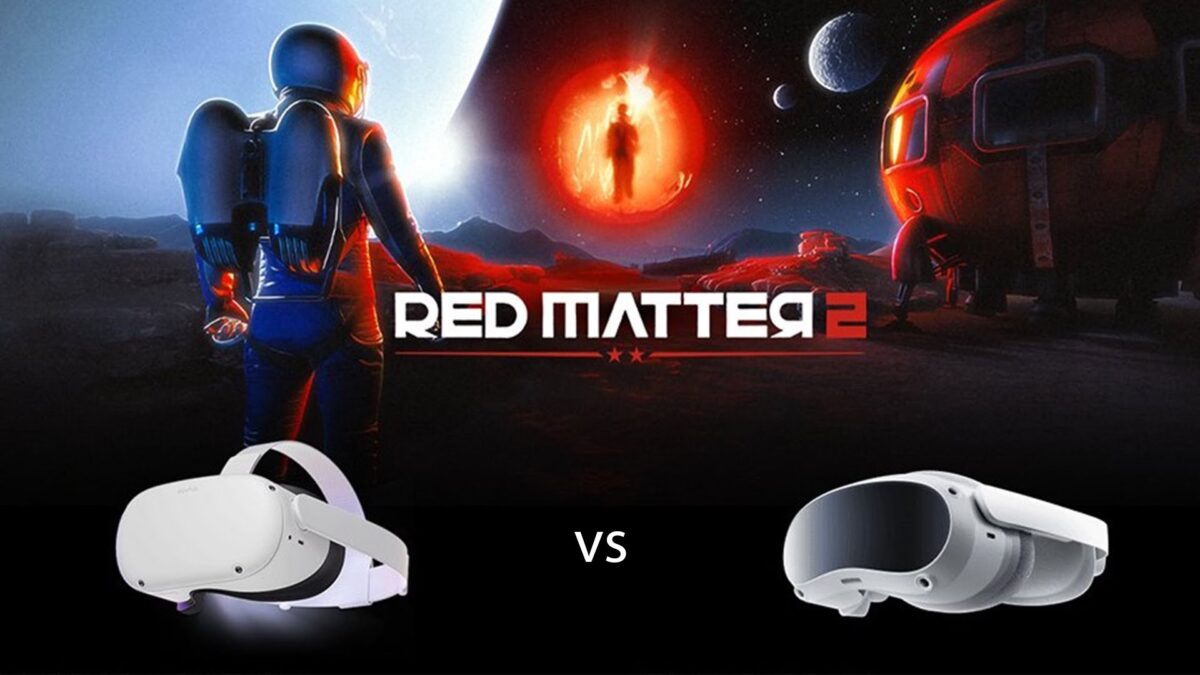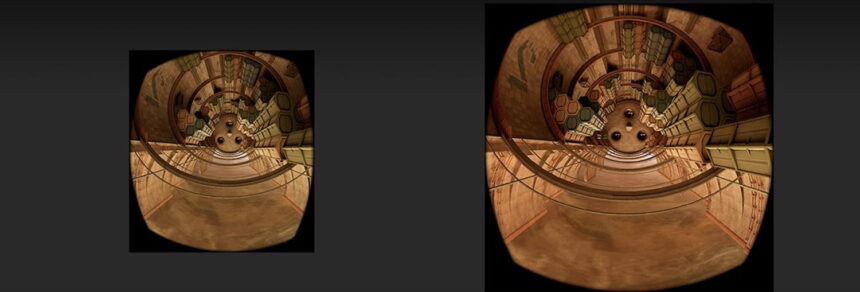Pico 4 vs. Quest 2 graphics comparison with Red Matter 2

Red Matter 2 is considered one of the most beautiful VR games for Meta Quest 2. Can the Pico 4 version step it up graphically?
Pico's new headset uses the same Snapdragon SoC as Meta Quest 2, but the chip is clocked higher thanks to increased cooling and a rear-mounted battery. The GPU of the Meta Quest 2 only runs at half load for heat generation reasons.
On Twitter, the team behind Red Matter 2 (review) writes that the VR game will soon be released for Pico 4 and publishes a list comparing the render settings of the two versions.
"We have been really impressed with what Pico 4 is capable of," Vertical Robot writes.
Red Matter 2 is coming to @PICOXR very soon!
Here's a quick breakdown of some of the technical differences between the Quest 2 and Pico 4 versions.
We have been really impressed with what Pico 4 is capable of. We can't wait for you to check out what we have achieved! #VR #PICO4 pic.twitter.com/VoLF2QUFsa- Vertical Robot (@Vertical_Robot) November 9, 2022
Red Matter 2 render comparison
The studio divides the comparison into five render categories. Fixed Foveated Rendering (FFR): The peripheral areas of the field of view are rendered at a lower resolution to save processing power.
Meta Quest 2 supports dynamic FFR, which means that the strength of this effect is adjusted depending on the current GPU load. The studio has capped the adjustable FFR level. "Otherwise the pixelation is too distracting," writes Vertical Robot.
Pico 4 can't do dynamic FRR, yet the studio chose the most aggressive pixelation level. The reason: "Even at the highest foveation level, the pixelated area stay at the borders of the image and don't become a distraction."
Subsampling: a filter that makes lower-resolution areas appear less pixelated.
Only Meta Quest 2 supports subsampling, which results in a softer image in the FFR areas. In the Pico 4 version, these are therefore "noticeably pixelated" when you pay attention to them, according to Vertical Robot.

The Pico-4 version renders significantly more pixels. The result is a sharper image. | Image: Vertical Robot
MSAA: Multisample Antialising is applied to the entire image to smooth edges and prevent staircase effects.
Meta Quest 2 uses quadruple MSAA because otherwise "too much aliasing" would be visible. In Pico 4, double MSAA is active. However, due to the higher resolution in which the game is rendered, the disturbing artifacts are hardly noticeable, says Vertical Robot. The studio used the extra performance to increase the eye buffer resolution even further.
Eye Buffer: The rendered resolution of the game.
The resolution is 1,205 by 1,440 pixels (highest IPD value) and 1,226 by 1,440 pixels (lowest IPD value) in Meta Quest 2, and 1,872 by 2,060 pixels in Pico 4 - thus significantly higher!
"It should be noted that the field of view is higher on Pico 4. So there is more to render as well," the studio writes.
GPU Level: The level of GPU clocking used by the game.
Red Matter 2 runs at the highest allowed GPU level, which is 490 Mhz. On Pico 4, however, the game runs at a GPU clock of 587 Mhz, which is about 20 percent more.
Red Matter 2 is probably prettier on Pico 4
On the whole, the game should look better with Pico 4 than with Meta Quest 2, at least the render settings suggest that. The biggest influence will be the significantly higher render resolution.
It will be interesting to see how the Pico 4 version compares to the Quest Pro version of Red Matter 2. The (much more expensive) headset supports gaze-based foveated rendering, and can thus render the VR game in a 30% higher resolution - without pixelated FFR border areas.
The headset also supports Local Dimming, which provides better image contrast by selectively turning off areas of the backlight.
Note: Links to online stores in articles can be so-called affiliate links. If you buy through this link, MIXED receives a commission from the provider. For you the price does not change.